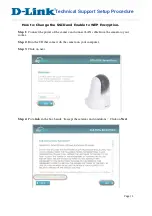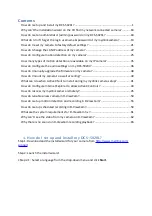
7.3 A
Auto Fill
Light output is controlled by the sensor located on the front of the flash.
When the Trio is placed on a camera F number and ISO information are
sent to the flash from the camera. As the F number and ISO are
changed on the camera the flash will display them.
Use this mode if you want Trio’s sensor to control the exposure, but F
number and ISO on Trio to track the camera settings. A Sensor Limit
feature can be used in situations with no background, like an open field.
See sections 11.5 and 11.6.
Radio: Can be set to send a SYNC signal to fire remote flashes.
Or it can be set to send a LINK signal to fire and control
the exposure of remote Qflashes. Remote flash must be in
Linked to Local (RL) mode.
When used off camera the radio can be set to receive (RX) a
sync signal from an on-camera flash or an on-camera
FreeXWire.
Benefits
: Fast response for action shots. No pre-flash required.
Exposure easily checked with flash meter. Remote Qflash can be
adjusted from –3 stops below to +2 stops above camera settings.
Note
: Requires some knowledge of how auto flash exposure works.
Remote exposure setting will be the same for all remotes, when linked
7.4 QR QTTL Ratio
Uses the exposure system built into the camera. Possible to set
independent ratios of multiple remote Qflash / Trio.
Use this mode if you want to set up lighting ratios that are controlled by
the camera’s TTL system.
Radio: Defaults to QTTL mode. TTL ratio information will be sent to the
remote Qflash / Trio.
Benefits
: Allows for ratios between remote flashes without entering the
more complex Advanced Multi mode. Remote Qflash / Trio must be set
Remote Group (RG) mode.
Note
: Slower response, not good for action shots.
12
QR
AF













































